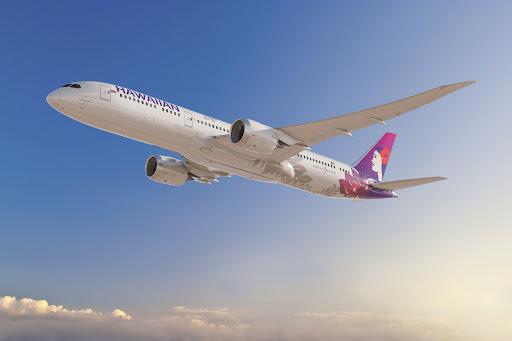
Hawaiian Airlines is pushing back its Boeing 787 deliveries due to a weaker long-term demand outlook, although the short-term picture is beginning to improve as quarantine restrictions ease in key markets.
The airline said it has postponed the first two 787-9 deliveries from early 2021 to September and December 2022, following negotiations with Boeing. A subsequent eight 787 deliveries are now due to arrive in 2024-26. Hawaiian previously had disclosed that deferral negotiations were underway.
“The 787 is a terrific airplane and will be a vital part of our fleet in the future, but we don’t need it in 2021,” CEO Peter Ingram said during the carrier’s 2020 third-quarter earnings call Oct. 27. “I’m pleased that we were able to make this agreement to push back deliveries to a more appropriate time.”
While the first two aircraft are due in late 2022, they probably will not enter service until 2023, Ingram said. Rescheduling the deliveries will give the airline relief on short-term capital expenditures; more than $500 million has been deferred to 2024-26 from 2020-23.
Quarantine requirements for visitors from U.S. mainland markets have decimated travel to Hawaii for most of the year. However, the requirement was removed on Oct. 15 for travelers providing evidence of a negative COVID-19 test from an approved provider. Ingram said this change is expected to deliver a boost demand in coming months, and Hawaiian plans to increase services accordingly.
Ingram said the initial effects of the pre-travel testing program are encouraging. “The logistics of the process are going relatively well ... There have been some teething pains that are being worked through by the state [but they are] improving every day.”
Hawaiian operated just 18% of last year’s North American schedule in the third quarter. It aims to boost this to 37% in the fourth quarter. The schedule is expected to be at 20% in October, 36% in November and 54% in December. It could reach the mid-60% range during the holiday peak. By year-end, Hawaiian plans to have restored service to all of its U.S. mainland destinations.
The airline introduced a pre-travel test program in August for its inter-island passengers. This has dampened the demand recovery in this market, as the cost of testing is relatively high compared to the fares on these routes. Hawaiian expects to operate about half its inter-island schedule in the fourth quarter.
The airline halted all scheduled international passenger flights in the third quarter. However, it introduced a weekly passenger flight to Tokyo in October for essential travel. Japanese demand is expected to increase as Hawaii’s state government has included Japan in its pre-testing program, allowing inbound travelers to bypass quarantine starting Nov. 6. Passengers from South Korea are expected to be included soon.
Hawaiian plans to increase its services to Japan, and later in the quarter it will convert some of its all-cargo flights to South Korea to include passengers, Hawaiian SVP of revenue management and network planning Brent Overbeek said. However, the carrier does not expect to resume services to Australia and New Zealand this year. Overall, Hawaiian plans to operate 5-10% of its international schedule in the fourth quarter.
The carrier recorded a $97.1 million net loss for the third quarter, versus an $80.1 million profit in the year-ago period. Revenue dropped by 90% year-on-year to $78 million.
Hawaiian reduced its workforce by about 2,400 during the third quarter, more than 32% of its total. Almost 2,100 left through voluntary programs. The carrier closed on about $421 million in new financing during the quarter, including deals secured by aircraft, sale-and-leaseback agreements, and a partial drawdown of Coronavirus Aid, Relief, and Economic Security (CARES) Act funds.





